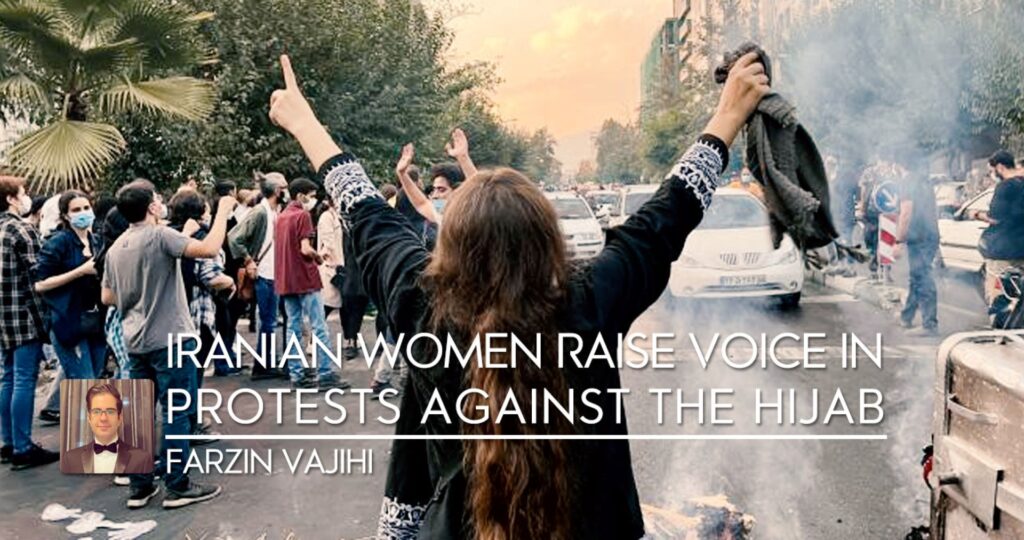
Author: Farzin Vajihi, Political and Energy Policy analyst, Journalist.
In the recent past, Iranian government has increasingly suppressed and oppressed women because of not wearing a hijab or improper dressing in the hijab. This has resulted in many protests across the country. Recently, a woman arrested by the morality police named Mahsa Amini, aged 22 years, died after a beating by morality police sparking protests where women burned their hijabs and cut their hair as a show of solidarity. Most women in Iran are now protesting against the mandatory wearing of the hijab in public places for two main reasons. Firstly, most women feel the Iranian government is violating their freedoms on what to wear and when. Secondly, some think that the morality police enforcing the dress code on women are using too much force to abuse the freedoms and rights of women in Iran. As a result, there is a growing protest movement of Iranian women and those supporting their course to use the anti-hijab demands to ask for other women’s rights and freedoms, making it more than a hijab issue.
The Islamic revolution in 1979 marked the start of the hijab requirement for women, although there was no law or force in place to enforce it. At this time, the government indicated that based on the principles of Prophet Mohammed and the Quran teachings, women were required to wear veils to cover their heads and faces in public places. However, there were protests against it, leading to relaxation through enforcement. Finally, in 1983, it was officially enacted, and the women violating the wearing of the hijab dress code could receive a punishment of lashes from the morality police. With time, the sentence also included confinement in a jail facility for up to 60 days once arrested for breaking the mandatory hijab law in Iran. Despite these restrictions, women have continued to protest against the policy, turning it into a call for other women’s rights by the feminist movements in the country and other parts of the world. As a result, most women in Iran wear the hijab loosely or let it fall over their shoulders.
One of the issues raised by most Iranian women is the legitimacy of such a law under religious grounds resulting in protests. Most of the activists against the mandatory hijab have indicated that the Quran and other religious doctrines for the Islamic nation do not speak about the hijab but a veil. The lack of clarity and description of how the cover should be worn has sparked resistance by many women opposed to the mandatory requirement. Secondly, the morality police have been so harsh on women and abused their freedoms, including physical abuse protected by the government and perpetrated by the officers. For instance, in the recent past, most news stories from Iran have covered a report of a 22-year-old Iranian lady who was hit by the morality police many times because of not wearing the hijab properly. In the end, the woman fainted and died, although dismissed due to a heart attack. The family and witnesses indicated she was perfectly okay. This has sparked protests in Iran and other nations, where many women have shown solidarity by cutting their hair and burning their hijabs in objection to the government. This indicated the growing dissatisfaction among the Iranian women and the enriched movement that could force the Iranian government to change the policy.
The use of violence by the police in implementing the mandatory hijab in Iran and other traditional norms that deny women many freedoms and rights preferred by the United Nations Commission on human rights and other feminist groups have resulted in a growing interest in advocating for women’s rights in Iran. The anti-hijab protests have turned not only against wearing the head scarf but also against other women’s rights being violated in the country. This recent trend, backed up by feminist and women’s rights movements worldwide, strengthens the protests to achieve these freedoms from the government. Most women complain about the lack of equal educational and job opportunities for women in the country. Men only dominate some fields. Women are considered objects to fulfill the sexual desires of their husbands and give birth to children, especially the male gender. This leaves many young girls stopping education and forcefully getting married at a young age. These issues and the nature of male dominance in Iran have come up in the protests against hijab-wearing.
In summary, mandatory hijab requirements have sparked mixed reactions and protests against the government’s harassment of women and abuse of their freedoms. Most of the pro-hijab supporters have indicated that not only is this a religious requirement but also a part of the Islamic culture of Iranians, which the nations should respect. However, Iran has many ethnic affiliations with different beliefs and interpretations on the way of dressing and some of the freedoms. Besides, some advocate women’s rights are fundamental and universally agreed upon as the minimum of human rights. However, this has made the issue of culture be demeaned as it is being used as an excuse to continue the physical abuse of women and denial of their rights while protecting the male dominance on the other hand that is oppressive to the women.





More Stories
“It’s All About Value” – Inside the Bailie Hotel’s Unbeatable Rates
We Found the Perfect Cure for the January Slump_ A Hilarious Hotel!
Scandal at the UN: Judge Ali Abdulla Al-Jusaiman at the Center of a Judicial Falsification Case